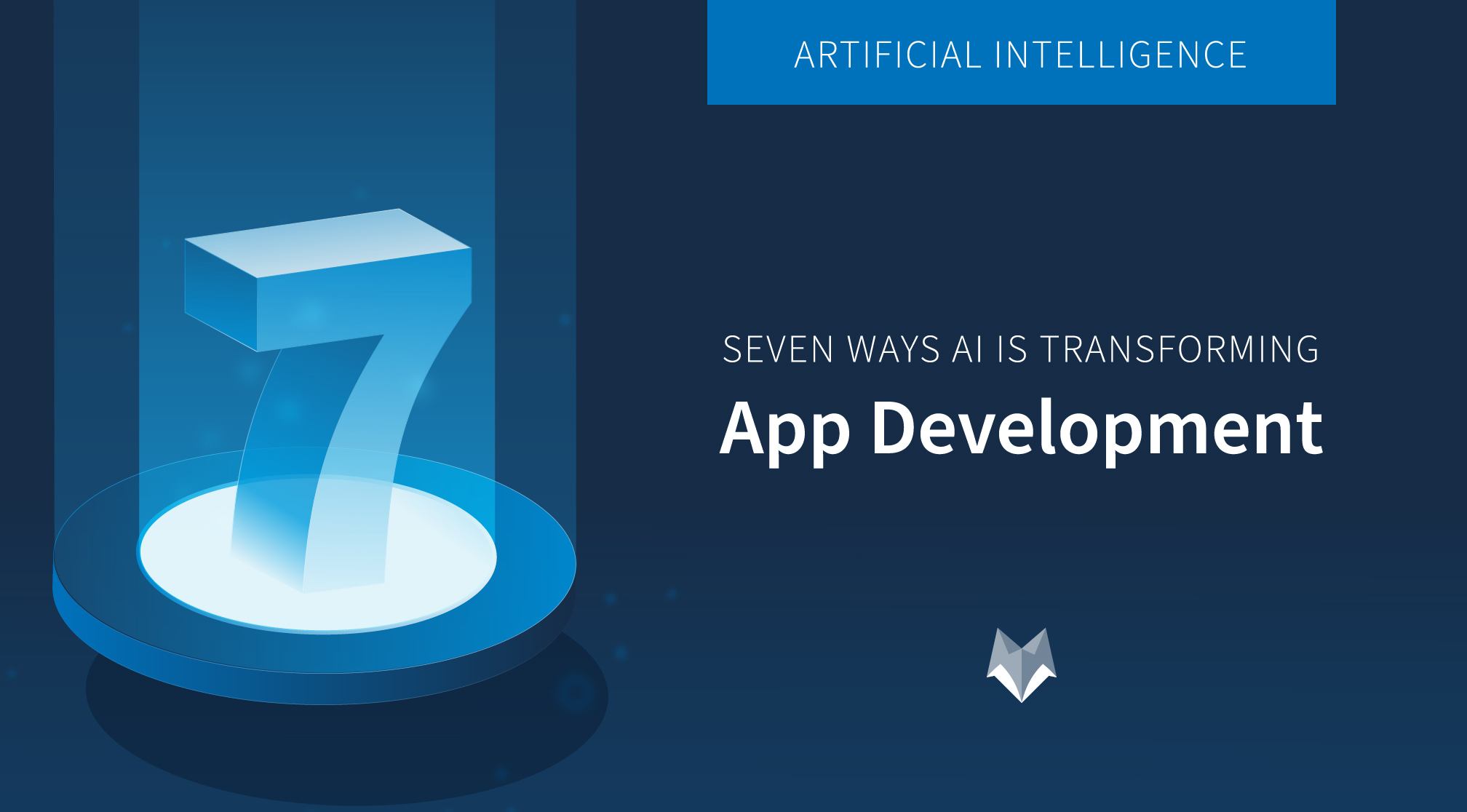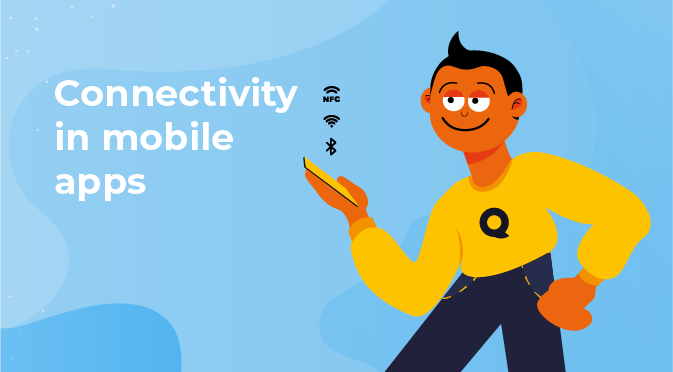How to plan for growth: Designing app user journeys that’ll help you scale
February 24th, 2021

This guest-post is courtesy of our partners at Input Logic.
When you’re trying to scale your app users, it’s easy to get caught in the weeds. Maybe you keep adding feature after feature, but nothing seems to catch on. Or you’re spending a ton of money on marketing every month, but have no idea what’s working and what isn’t.
Whether you’re prelaunch or several years in, there are simple things you can do to help get a clearer picture and start optimizing your product for real growth.
What does it take to scale an app?
If you want to scale, there are a few things you really need:
A crystal clear idea of who your ideal user is. It’s helpful to be much more specific about this than you think you need to be. What do they do for a living? Where do they live? How do they think? What brands and products do they like and dislike?
A deep understanding of the problem they’re facing, and how you can help solve it.
A good sense of where and how to find those users.
A user journey you can send them on, where they’ll quickly get a sense that your app solves their problem, and they’ll keep coming back for more.
In theory, this sounds simple. In practice, it requires a lot of thought and testing.
Here are some steps you can take to get started:
Step 1: Zoom out.
Take a step back for a moment and think about your overall goal. What are you building? Who is it for? What specific problem are you trying to solve for them?
And, crucially, how will you know if you’ve successfully solved it for your users?
Start with one specific problem in mind, and one specific solution. If you haven’t already, set a very clear, measurable metric around it.
For example, if you’re early Airbnb, you want people to book accommodations. A booked stay generates revenue, and solves a problem for both the guests (finding a place to stay) and the hosts (making a little money from some vacant space). The more you can do this, the more of a business you have.
It might sound like an oversimplification. Surely the length of stay matters, and the profit margin on the transaction, and the quality of the experience for everyone involved. Yes! You can have secondary metrics that are important. But there’s one core, repeatable action that drives every scalable business, and it’s vital that you identify yours.
This is your North Star metric.
(If you’re not measuring it yet, now’s the time to start. Google Analytics can take you pretty far. If you want to go deeper and understand in-app customer behavior at a more granular level, a powerful analytics tool like Amplitude, Heap, or Mixpanel can be helpful.)
Step 2: Assess the current situation.
Now that you’re armed with your North Star metric, dig into your current product.
What are your current usage patterns? Do people come back daily? Weekly? Monthly? Less, on average?
What would be a natural usage cadence for your product, if it were really successful? How often are people doing the repeatable action that your North Star metric is designed around? For instance, if you’re Twitter, you probably want people opening the app and tweeting multiple times per day. Airbnb, by contrast, won’t be a daily usage app for travellers. Figure out what your ideal natural cadence is.
Who are your most active users? Do they have anything in common? Their use case? A particular feature they’re using? An acquisition source? A geographical location? An age group? Search for these commonalities — you might learn something surprising.
Talk to those top users! Literally get on a call with them. This is the simplest step, and it’s one that everyone overlooks. Offer them a gift card or payment if you have to — but take a couple days and talk directly to them yourself. Find out why they’re using your product, what they love about it, what they would change, and what specifically made them want to become a regular customer.
Visually map out your current user journeys. Even if ends up being a bit of an unwieldy mess, use flow diagrams to show the possible primary routes that users can take through your product. From acquisition channels right through to in-product actions and user churn, lay out what the current reality of your user journeys look like, warts and all. (
Miro and
MilkyMap are great tools for customer journey mapping.)
Step 3: Try to find your ideal new customer journey.
We’re going to start simply. Your goal now is to focus everything in on that North Star metric.
Look at your user journey map. Are there places where you’re pushing users to actions that have nothing to do with your North Star metric? How quickly are you helping new users solve their problem? Can you shorten and simplify your user journeys, so you’re demonstrating value and getting users to take your most important action, sooner?
Create a hypothetical journey that you think might perform better than your existing one. Build it (as simply and quickly as you can), and test it against your existing journey.
Maybe that means introducing an onboarding sequence, to help people understand your product more easily. Maybe it means removing or revamping an overly cumbersome onboarding sequence. Maybe it means disabling a feature or two that are distracting and not providing value. It doesn’t matter much where you start, just pick one thing to test that you think might be really impactful. Using your North Star metric, see which journey is more effective. Rinse and repeat.
Step 4: Test your acquisition channels.
Once you have a pretty strong onboarding journey that you feel good about, turn your attention to your acquisition sources.
Start testing different campaigns, target audiences, and channels against that single user journey. Do certain ads or audiences convert better? Are friend referrals more powerful than Instagram ads? Are your content marketing efforts generating valuable customers? Use your North Star metric to compare channels and campaigns. Ideally, find one or two channels that are performing really well and are cost effective. Double down and focus on optimizing those further.
To start, focus solely on CAC (your customer acquisition cost) and your North Star metric. You’re looking for an affordable way to acquire a high volume of customers, who will go on complete your primary user action.
Google Analytics can take you pretty far if you’re using UTM links properly, but if you’d like a more accurate view of web-to-app conversions and attribution, it’s helpful to implement a tool like Branch.
Step 5: Zoom out again.
Now you’ve got a pretty good initial customer journey, and a pretty good acquisition channel. It’s important to zoom back out from time to time, and look at the whole customer lifecycle.
Some channels might allow you to acquire new customers cheaply, for instance, but they’ll have a really high churn rate after a short period of time. There might be customer journeys or acquisition channels that look like they perform worse up front, but that actually deliver more value over time.
For most monetizable apps, Customer Lifetime Value (or LTV, the total net profit you’ve generated from each user, on average, over the course of an average customer’s lifetime) is the primary revenue metric to optimize for.
Ideally, you want a healthy LTV that’s at least a few multiples of your CAC. What’s important here is the difference between those two figures — you don’t want to spend money to acquire a user, only to have them churn right away. You might find that some acquisition channels are a little more expensive up front, but generate users who are much more likely to stick around over time. In that case, a higher LTV can justify a higher CAC.
Similarly, a higher friction onboarding journey might help customers get up to speed with a complex product, and keep them around as paying customers a lot longer. (Superhuman is a great example of this.) You might find that implementing a more intensive — but more useful — onboarding journey actually helps convert and retain more users, even though it’s a little counterintuitive.
Step 6: Keep testing.
As you can see, there’s an endless number of things you can be testing. A good growth strategy is never a one-shot deal, and it never really ends. It’s an iterative process, and it takes careful thought and focus to grow your user base over time.
Things to keep in mind when it comes to testing:
Try to get statistically significant results as often as you can, so you don’t make critical errors based on faulty assumptions. If you don’t have a ton of users, that might mean running tests for longer periods of time, or running them again in the future to make sure your findings were correct.
Less is more. Focus on simple, high-impact tests that will generate a useful insight for you. (For example, unless you have millions of users, “does our onboarding journey help convert new users?” is probably a more useful question than, “should this button be blue or green?”)
Conclusion
Ultimately, constant experimentation and lots of interaction with your customers should provide you with a wealth of data to inform your product roadmap. If you can align your development, marketing and sales efforts around common goals and metrics, and you take a methodical approach to testing, you’ll have a great shot at scaling your app over time.
About the author
Kristin Eberth is Head of Growth at Input Logic, an interface design studio that helps startups and brands build beautiful products. They're all about web and app development, UI and UX design, and growth strategy. If you're looking for some help, set up a quick chat.
Similar Articles

Posted on March 18th, 2021
The future of technology is AI and the future of AI is mobile. The latest data shows that the market size of artificial intelligence was valued at $27.23 billion in 2019, this figure is projected to reach $266.92 billion by 2027 (Fortune Business Insights, 2020).

Posted on December 11th, 2020
Today nobody can imagine life without smartphones. They connect us with our friends and family, and provide entertainment and access to social media. That is why mobile phones have become an integral part of everyday life.

Posted on November 19th, 2020
Mobile technology and the accessibility of smartphones and other mobile devices allowed for the convenience of instant access to live streaming and video content that could be viewed from a screen in the palm of your hand.




